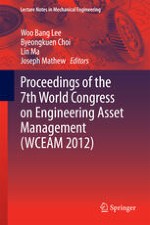2015 | OriginalPaper | Chapter
56. Managing Knowledge for Asset Management: Shifting from Process to Relational Frames
Authors : Anna Wiewiora, Kerry Brown, Subas P. Dhakal, Muhammad Nateque Mahmood
Published in: Proceedings of the 7th World Congress on Engineering Asset Management (WCEAM 2012)
Publisher: Springer International Publishing
Activate our intelligent search to find suitable subject content or patents.
Select sections of text to find matching patents with Artificial Intelligence. powered by
Select sections of text to find additional relevant content using AI-assisted search. powered by
